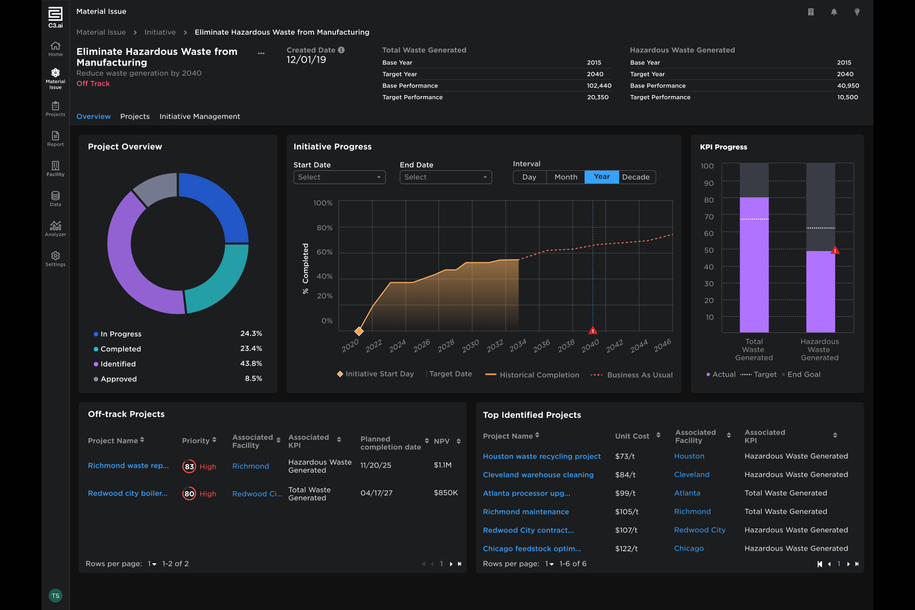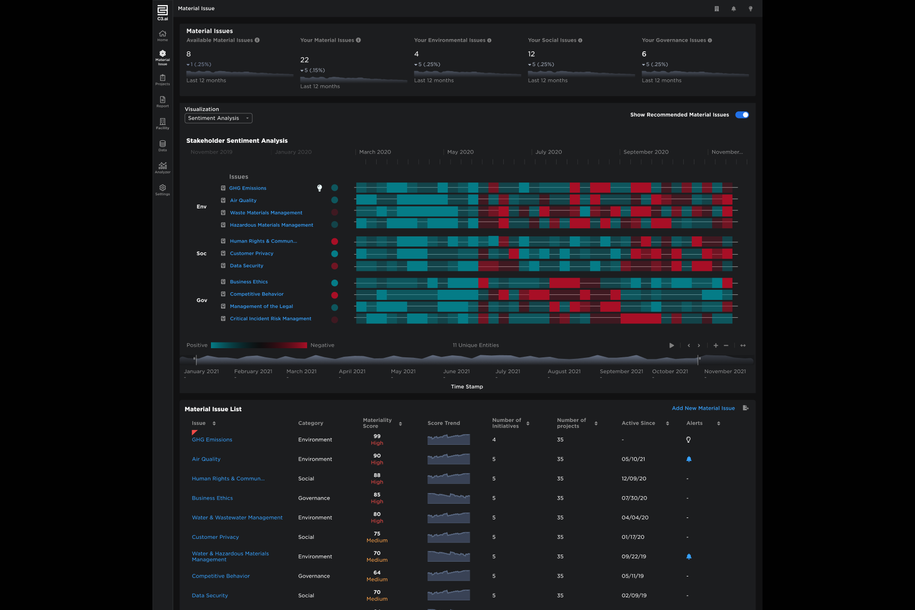BHC3 ESG enables energy companies to monitor, report, and improve their ESG (environmental, social, and governance) performance. Customers can utilize BHC3 ESG to streamline the process of gathering and validating ESG data across the organization, prioritizing and mapping data to widely-used ESG reporting standards, and identifying and tracking progress across performance-improving initiatives for priority ESG issues.
BHC3 ESG video
Demonstrated Benefits
AI-Based ESG Management
Pain Point
BHC3 ESG Solution
Fragmented ESG data across multiple disparate systems
Unified ESG data across disparate enterprise systems provides single source of truth
Difficulty tracking priority issues across key stakeholders
AI-based stakeholder monitoring tracks perception in near real-time to identify material ESG issues and reduce risk
Inability to track progress against enterprise ESG goals
Goal setting and real-time tracking helps achieve ESG targets across the enterprise
Significant time spent responding to one-off data requests
AI-based data ingestion automatically matches ESG metric to available data
Data collection process is highly manual and prone to error
Error alerting and robust data lineage ensures high accuracy ESG reporting and reduces compliance risk
Difficulty keeping up with rapidly evolving reporting requirements
Native support for all major ESG reporting standards streamlines reporting across multiple frameworks
Key Capabilities

Unified ESG data
- Integrate across disparate enterprise systems to automatically ingest and unify data in a single platform.
- Create a single pane of glass to holistically review ESG data and performance.
- Review ESG performance on an issue-by-issue basis across business units, geographies, and down to individual locations.

AI-based stakeholder monitoring
- Utilize natural language processing to track sentiment across stakeholder groups including investors, employees, customers, communities, and others.
- Track trends in stakeholder perception over time to inform performance initiatives and engagement strategies.

NLP-Based Materiality Assessment
- Leverage Natural Language Processing (NLP) to scan for stakeholder perception on material issues and identify the highest priority issues for stakeholders as they emerge.
- Define quantitative performance goals and set time-based targets for priority ESG issues.
- Track performance over time and leverage AI-driven recommendations to keep initiatives on track.

Define projects to deliver ESG commitments
- Define projects to improve ESG performance and map projects back to enterprise-wide initiatives.
- Explore scenarios to select the most capital efficient ways to deliver performance improvements.

Error alerting and robust data lineage
- Trace data from the point of entry through to external reports to ensure the accuracy and integrity of reported data
- Receive alerts if data is suspected to be inaccurate to reduce the time spent identifying and fixing data errors

Native support for all major ESG reporting standards
- Align reporting objectives to stakeholder needs using the NLP-based materiality assessment
- Automatically map available data to widely supported voluntary reporting frameworks
- Create and manage a range of reports, and track completion to ensure reports are issued on time
Benefits for ESG Professionals






